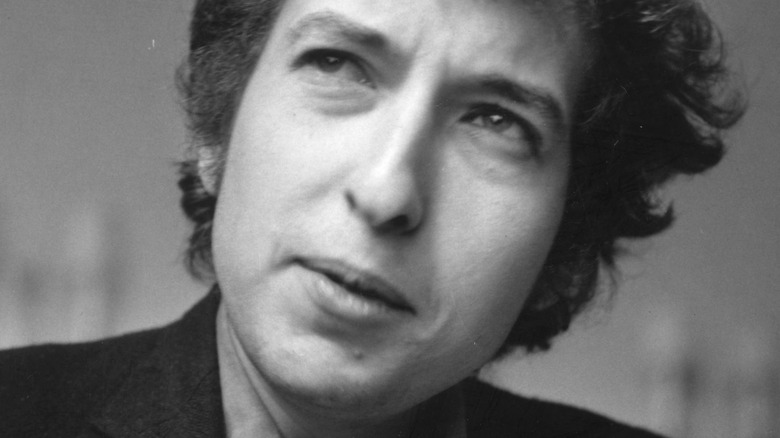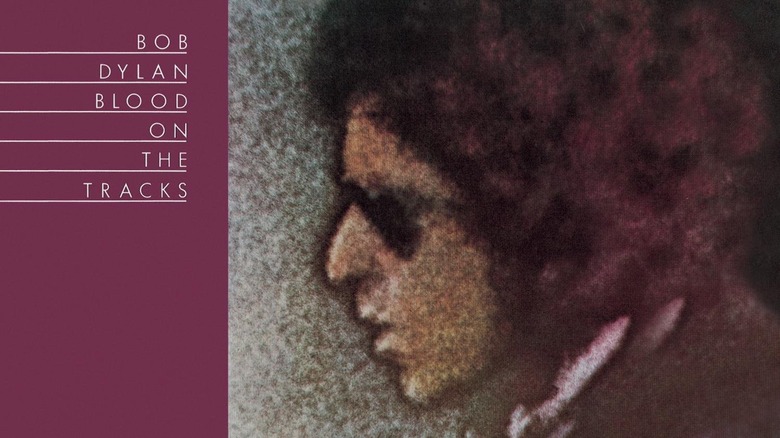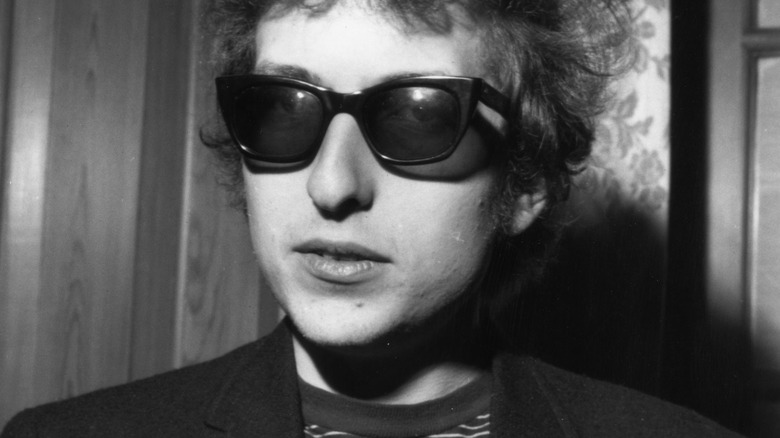The Real Meaning Behind Bob Dylan's Tangled Up In Blue
Almost everything that can be said about Bob Dylan has probably already been said. Folk-rock has had many musicians in its long and rich history — many of them influential in their own right – but Dylan might be the most famous of them all. Born Robert Allen Zimmerman on May 24, 1941, Dylan's music career is perhaps one of the most significant and ubiquitous in music history (via Britannica).
A multi-talented musician, Dylan made his name as a singer-songwriter who could sing and play harmonica, keyboard, and guitar. As of this writing, his career spans over 39 albums according to his official website. Some of these are considered to be some of the greatest albums ever made, like "Highway 61 Revisited," "Blonde on Blonde," and "Blood on the Tracks" (via Rolling Stone). Transcendent of the genre, his accomplishments were even recognized by the Nobel Prize committee in 2016, landing that year's Nobel Prize in Literature. But out of Dylan's songs, one, in particular, remains a classic enigma to many: "Tangled Up in Blue." So What does this song actually mean? The first step in understanding "Tangled Up in Blue" might have to do with understanding the single's backstory.
Is the song Tangled up in Blue is autobiographical?
Bob Dylan's 1975 album "Blood on the Tracks" has gone down as a folk masterpiece. According to Rolling Stone, the album is frequently called Dylan's best work, even though some critics initially gave it a lukewarm reception. Over the years, some have wondered whether the gravitas and greatness of "Blood on the Tracks" could have been founded on older, literary roots. One pervading theory is that the album was actually a not to the short stories of Russian writer Anton Chekhov — though per the New Yorker, this particular speculation can't be confirmed. Then again, it wouldn't be the first time a Dylan record remained more enigmatic than not.
Out of all of the songs featured on "Blood on the Tracks," there's one that might stand above all else: "Tangled Up in Blue," a song Dylan purportedly once said took him "ten years to live and two years to write" (via TIME). By all accounts, the song is also deeply personal to Dylan — at the time of the song's composition in the early 1970s, the singer-songwriter was in the middle of a turbulent marriage and in the throes of substance use disorder. The lyricism of the song itself seems to reflect these issues; by all appearances, "Tangled Up in Blue" makes reference to a marriage in trouble and rough times already had. But the song would go through multiple revisions before the final version we know today.
Bob Dylan made numerous revisions to Tangled Up in Blue
"Tangled Up in Blue" has many of Bob Dylan's usual lyrical hallmarks, chief among them evocative imagery woven together with a punchy stream of consciousness. This kind of poetic construction and stylistic flourish is apparent in the song's composition. According to a 2018 write-up by the New Yorker on Dylan's process of recording the album "Blood on the Tracks" — on which "Tangled Up in Blue is featured — Dylan actually made multiple revisions to the song. Per Open Culture, these edits included changing pronouns of figures within the song, removing and altering verses, and even dabbling in a non-linear perception of time.
Much of the lyricism is whimsical and enigmatic, which makes it somewhat hard to determine what part of "Tangled Up in Blue" is autobiography (specifically, about his marriage to his wife at the time, Sarah Lowndes, per the New Yorker) and what is creative invention. Ultimately, the song seems to be about love itself, with Dylan lamenting romantic angst and personal tribulations. (With lines like "but she never escaped my mind and I just grew/tangled up in blue," it's hard to think otherwise.) Either way, the song will be enjoyed by many admirers for years to come.


